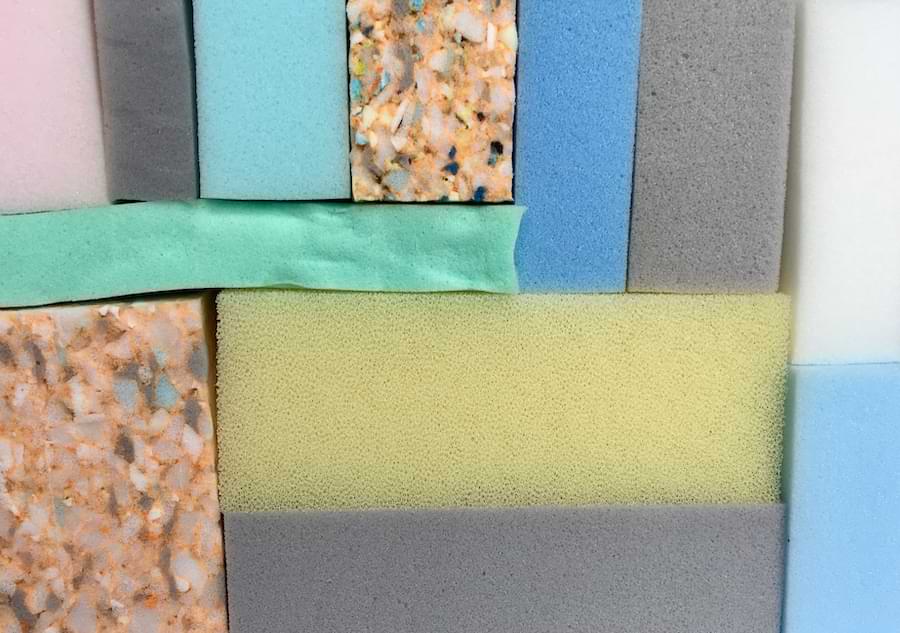Foamboard has numerous uses, but what about after it has served its purpose, is foam board recyclable? Here’s where I go into detail about the recycling options of foamboards – starting with a quick takeaway answer.
Generally, foamboard is recyclable. Commonly recycled types of foam are polystyrene (EPS and XPS), polyethylene foam, and polyurethane foam. Densification is the common method of recycling foam. It also depends on the type of foam board and the recycling policies, and the facilities available.
There’s the quick answer, and as you might expect it kind of depends! So we’ll go through a few more details, and then guide you on what to do at the end regarding the foam you have.
If you’re not sure what foam board is then check this article. But we’ll cover a number of foam types in this post.
Factors that determine foam recycling
Foam board is recyclable most of the time. But this largely depends on the type of foam and whether it is actually foam board or another type.
It also depends on what it’s made of, and more importantly, the country, county, or district and its policies with regards to foam recycling.
On average, many countries avoid recycling foam due to a few reasons…
The types of foam products accepted for recycling also vary in countries due to the availability of processing facilities. You can usually check with your community recycling centers to confirm which types of foams are accepted and which are not.
Why foams are not accepted in many recycling centers
As mentioned, many countries try to avoid recycling foams.
The overarching reason comes down to weight. Usually, waste processing targets and profits are measured by weight. Greater weight processing means higher profits.
So as you might expect, the lightweight nature of foam makes it less financially attractive to process when compared to other waste materials.
For example, a truckload of loose foam might only weigh around ~1,000 lbs. That means far less value than a truck weighing 5000 lbs or more from other waste.
So foam’s lightweight nature means it does not make a significant enough prospect to be profitable.
There is then also a lack of options for the end product. Again due to its lighter weight, the end product after recycling is a significantly reduced product for use as other products. Less so for higher density foams, but certainly the case for foam boards.
The final reason is a culmination of the above factors, and that’s the sheer effort vs rewards.
It takes more manual effort to collect a pound of foam than a pound of say glass, or cardboard, and for much lower financial gain per pound during the waste segregation and loading process.
If your district, county, or country does not recycle foam, this is generally the reason. But some of this is changing, so keep reading to find out how.
Types of foam boards recycled
The three most common types of foam boards that are generally recycled come from those foam types used in consumer goods.
Again this depends on the local availability of your recycling facilities. Here are the three types:
Polystyrene foam recycling
Polystyrene foam materials, often mistakenly referred to as Styrofoam is mostly used as large molded blocks or containers in which to pack electronics, TVs, and computers.
Usually, polystyrene foams come in two forms, expanded polystyrene foam (EPS) and extruded polystyrene foam (XPS).
While both these types are perfectly recyclable, with the right processing facilities and technologies. in most countries, EPS is preferred as the type of foam that is more easily recyclable due to processing when compared to the others.
EPS foam recycling
EPS is a type of foam that is white and has a brittle texture that’s made up of many small beads of expanded foam that are bonded together.
It’s typically used for the production of disposable beverage cups and for packaging purposes.
XPS foam recycling
XPS on the other hand has strong insulating properties and is commonly used within the construction industry.
Usually, the alliance of foam packaging recyclers in a given country or district coordinates the recycling process of polystyrene foam – according to the facilities and technologies each has available.
Polyethylene foam recycling
The next type of foam that is recyclable is polyethylene foam. This is a type of dense foam used by manufacturers for numerous purposes.
One common use is as a protection medium for packaging goods. The dense structure of this foam provides sufficient protection for goods during transit and does not use up a huge volume in packaging.
Another distinct feature of this foam type is its buoyant feature, which makes it ideal for marine purposes.
Usually, polyethylene products marked or showing the recycling sign “4” can be recycled and you can send it to the relevant recycling program.
Polyurethane foam recycling
This type of foam is mostly used in furniture padding, underlay, and athletic mats.
Polyurethane foam is recycled in two main ways. One is through regrinding, which involves grinding the foams into a powder and using that to produce fresh new, more dense foam.
The second recycling method is called flexible foam bonding, which involves recovering pieces from the old foam and shredding them, and then again rebonding them to pieces to produce new foam products known as rebond or bonded foam.

Recycling facts to be aware of
The above-mentioned types of foam are recyclable only on the basis that certain criteria are met.
For example, this covers any type of foam designed specifically for food and beverage. So coffee cups, egg cartons, meat trays, takeout containers, and disposable plates are all non-recyclable. However, some recycling centers may still accept them, coffee cups are one example of this.
This is mainly due to hygiene. Their contact with food or beverage substances and other contaminants usually renders the foam non-recyclable. The added cleaning processes involved just make it less viable.
In many areas, Polystyrene Foam Recycling is now available with your local waste management. Provided it’s clean, white polystyrene foam blocks as these can be recycled; no cups, food trays, plastic wraps, or foam sheeting. If in doubt contact your local waste management center.
For these other types, follow my instructions below.
The common way foam board is recycled
While the process of recycling foam varies according to countries and their facilities, densification is the most commonly used recycling method.
In densification, foams are compressed to create a dense version, converting them from their original light and buoyant structure.
Densification is done under an extreme pressure mechanism, with the help of hydraulic or electric rams. The pressure causes the air cells in the foam to collapse resulting in a significant reduction in volume.
On average this densification process will convert a foam by between 50 to 90 times denser than its original form. Mostly in EPS foam.
The end output of this densification produces continuous square “logs”. These logs can then be easily cut and broken into convenient lengths or pieces ready to be stored and shipped to make new useful products.
How to recycle foam board
All of this is great I’m sure, but often you might not know what foam you actually have and you can be forgiven for not being a foam recycling expert.
The result of not being an expert simply means you will need to ask. The easiest and best way is to either check or try. Here’s what I mean in this 3 step process to recycling foam:
- If you know the foamboard was used in food and beverage products, then do not add it to the recycling pile. Note that in some places they may still ask you to add them, and they will divide it off at the recycling center.
- If you know the type of foam you have, then call your local recycling center and let them know what type of foam you have and whether it’s recyclable with them – or with another local center.
- If you do not know the foam type you have, then you can identify the type of foam, or simply take it along to your recycling center where they can inform you upon visual inspection.
Note: that some recycling centers might levy a small charge for recycling certain products. Again, this is usually to compensate them for the loss of weight and additional effort in recycling.
This is where people usually say “oh now the charges make sense!”.
More foam board recycling help
I hope this has helped you to understand the recycling of foamboard in greater detail and answers the question; is foam board recyclable!
You might also be interested in is EVA foam biodegradable. And be sure to check out other types of foam that might be useful for your project.
